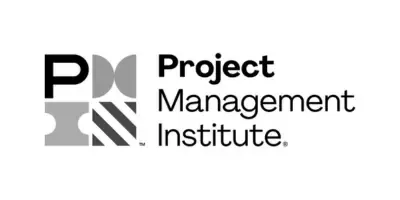Leadership in a Digital Age: Embracing Technological Transformation
In today's rapidly evolving digital landscape, leadership must adapt to harness the power of technology for organizational success. This guide explores the crucial role of leaders in navigating the digital age and embracing technological transformation.
Leadership in a Digital Age: Embracing Technological Transformation
As we delve into the digital era, leadership must evolve to embrace technological transformation fully. In this digital age, technology is not just a tool; it's a fundamental aspect of how organizations operate. Leaders must understand the significance of this shift and adapt their strategies accordingly.
Understanding the Digital Age
The Evolution of Technology
Technology has transformed the way we live, work, and interact. From the advent of the internet to the rise of artificial intelligence, the digital age has ushered in unprecedented advancements. Leaders must grasp the rapid pace of technological evolution to stay ahead in today's competitive landscape.
The Impact on Business Dynamics
In the digital age, businesses face new challenges and opportunities. From e-commerce to digital marketing, technology has reshaped industry dynamics. Leaders must comprehend these shifts to effectively navigate the digital landscape and drive organizational growth.
Changing Consumer Behaviour
The digital age has revolutionized consumer behaviour. With access to information at their fingertips, consumers are more informed and empowered than ever before. Leaders must understand these changing preferences to deliver personalized experiences and stay relevant in the market.
The Role of Leaders in Understanding the Digital
Visionary Leadership
Leaders must possess a clear vision of how technology can drive organizational success. By articulating a compelling digital strategy, leaders can inspire their teams to embrace technological innovation and stay ahead of the curve.
Continuous Learning and Adaptation
In the fast-paced digital age, learning must be a continuous process. Leaders must stay updated on emerging technologies and industry trends to make informed decisions. By fostering a culture of learning and adaptation, leaders can position their organizations for long-term success.
Empowering Digital Literacy
Digital literacy is essential for navigating the complexities of the digital age. Leaders must empower their teams with the necessary skills and knowledge to leverage technology effectively. By investing in Leadership training and development programs, leaders can build a workforce equipped to thrive in a digital environment.
Embracing Technological Transformation
Adopting a Growth Mindset
Leadership in a digital age requires a growth mindset—an openness to learning and embracing change. Leaders must continuously adapt and evolve to keep pace with technological advancements.
Fostering a Culture of Innovation
Innovation is the lifeblood of success in the digital age. Leaders must create a culture that encourages experimentation, creativity, and risk-taking to drive technological innovation.
Embracing Digital Tools and Platforms
To thrive in a digital world, leaders must leverage digital tools and platforms effectively. From project management software to social media platforms, these tools can streamline operations, enhance communication, and drive growth.
Challenges and Opportunities
Navigating Digital Disruption
Digital disruption is inevitable in today's fast-paced environment. Leaders must anticipate and respond to disruptions effectively, turning challenges into opportunities for growth and innovation.
Balancing Data Privacy and Security
With the rise of big data and cybersecurity threats, leaders must prioritize data privacy and security. By implementing robust security measures and complying with regulations, leaders can build trust and protect sensitive information.
Addressing the Digital Skills Gap
The rapid pace of technological change has created a digital skills gap in the workforce. Leaders must invest in Leadership training and development programs to equip employees with the skills needed to thrive in a digital age.
FAQs: Leadership in a Digital Age
Q1: What is the role of technology in modern leadership?
A1: Technology plays a critical role in modern leadership, enabling leaders to drive innovation, enhance communication, and streamline operations.
Q2: How can leaders embrace technological transformation?
A2: Leaders can embrace technological transformation by adopting a growth mindset, fostering a culture of innovation, and leveraging digital tools and platforms effectively.
Q3: What are the biggest challenges of leadership in a digital age?
A3: Some of the biggest challenges include navigating digital disruption, balancing data privacy and security, and addressing the digital skills gap in the workforce.
Q4: How can leaders stay updated on the latest technological advancements?
A4: Leaders can stay updated by actively seeking out information, attending conferences and workshops, and networking with other industry professionals. Leaders can also enrol for leadership development programs offered by Crestcom.
Q5: What are the benefits of embracing technological transformation?
A5: Embracing technological transformation can lead to increased productivity, improved efficiency, and enhanced competitiveness in the marketplace.
Q6: How can leaders foster a culture of innovation in their organizations?
A6: Leaders can foster a culture of innovation by encouraging experimentation, rewarding creativity, and providing employees with the resources and support they need to explore new ideas.
Interested in a free Leadership Skills Workshop with your team?
- Address instantly fixable issues that impact customer perceptions and employee morale.
- Learn and practice a habit that will raise employee performance.
- Set actions with specific and measurable steps that they'll gladly be accountable to achieve.











